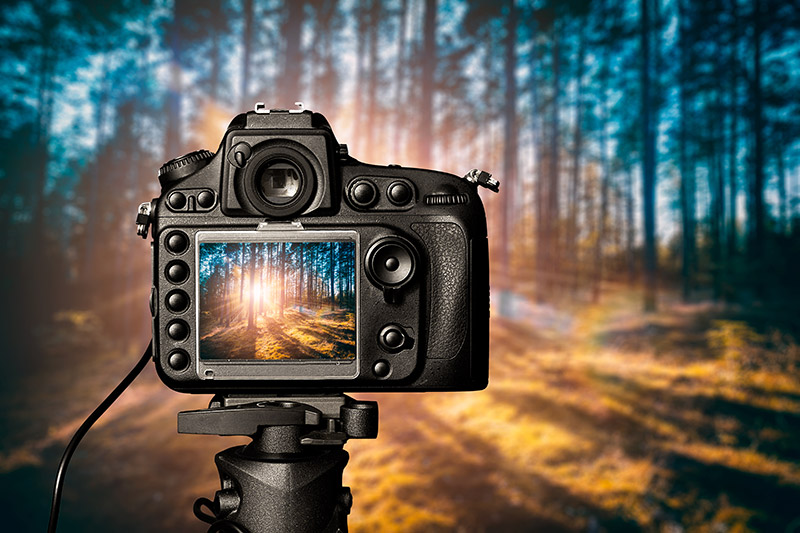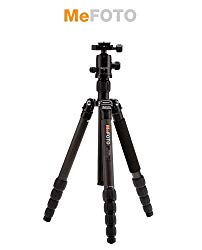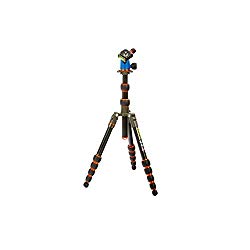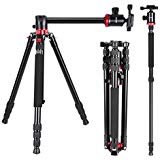
Tripods are some of the most important tools in a photographer’s kit. Image stabilization is important for maximizing image sharpness by using remote shutters to avoid shutter shock. Tripods also allow us to take long exposure images that would otherwise be impossible handheld.
In this article we’ll take a look at some excellent tripod options for amateur and enthusiast landscape photographers. These tripods are far and away better than the bargain basement tripods that give you very little stability, but they’re also significantly cheaper than the highest level of professional tripods. You’ll get the most for your money and the result will be better, sharper photos.
Price Range: Advanced Amateur or Enthusiast

![]()
Sometimes photographers like to debate on which is better, a tripod or monopod. But the simple fact is that there shouldn’t be any debate because they aren’t all that much alike. Both serve to provide image stabilization for your camera. But a tripod provides a point that’s fixed and you use one when you don’t intend to move very much. A monopod provides less stabilization but allows you to pick up and move to follow the action. Both serve in the right situation – but sometimes we want a little of both worlds.
The MeFOTO Globetrotter is perfect for photographers who want to work on a composite image of a landscape one moment and then chase after a herd of buffalo the next. The center column can be detached from the other legs save one to create an instant monopod.
The head rotates 360 degrees allowing for fully stabilized panoramic shots. And you can ensure you’re perfectly accurate thanks to the degree markers on the head. Instead of a snap-tab locking leg design, the MeFOTO uses twist-lock leg sections to lock the legs in place. Personally, I prefer these because they’re more secure. Snap-lock tabs are much faster but they also tend to get undone by accident all too often. The load capacity is 26.4 lbs. making this tripod perfect for even the heaviest DSLR + lens combinations.
A bubble level gives you extra piece of mind while composing shots if your camera doesn’t have a built-in electronic viewfinder level. Storing the MeFOTO is a breeze as the legs simply fold upwards 180 degrees flush with the body, making it an incredibly compact 16.1 in. when stowed away. Unfolded, the maximum height is 64.2 in.
Carbon fiber construction seals the deal for me. Aluminum is another common construction material for tripods. Both are durable; carbon fiber is more so but you shouldn’t be putting any tripod in conditions where aluminum will fail you. But carbon fiber is not only lighter but also dampens vibrations better than aluminum which is a wonderful quality to have for an image stabilization system.
Find the Best Price on Amazon
Price Range: Amateur

![]()
3 Legged Thing makes some powerlifting tripods. This aluminum one has a load capacity of 30 lbs! As a travel photographer working out of a backpack I rarely have a need for that much weight capacity. But add-ons can add weight, especially if you do videography work (in which case you may also be interested in 3 Legged Thing’s Albert Carbon Fiber Travel Tripod, with an astounding 60 lb. load capacity!). The Punks Corey holds 30 lbs. at the 23-degree leg orientation (“normal” stance); beyond that, it has a load capacity similar to other tripods of its class.
Aluminum is heavier and not quite as durable as carbon fiber but it shouldn’t be knocked over very much. It’s still a higher quality material than the plastic tripods that tend to flood the lower end market. Terms like “technopolymer” or “composite polymer” tend to blind the shopper to the cheap construction factor of these tripods. Aluminum and carbon fiber are your best bets if your gear may be at risk of getting knocked around in the field.
This tripod is also insanely good for ground work as it provides a sturdy base at a height of only 4 in.! This can be surprisingly useful if you like composing images of fall leaves or near the surface of a body of water, for example. And like the MeFOTO Classic, the 3 Legged Thing has a detachable leg allowing it to function as a monopod if you need the ability to pick up and go. At this price point this tripod competes very well with the MeFOTO. The aluminum construction is a major difference, and at 58 in. the max height is slightly shorter than the MeFOTO. But it’s much more compact with a minimum stowed length of 13.7 in. It also comes with a fluid level and quick release plate for easy camera attachment.
Find the Best Price on Amazon
Price Range: Entry Level

![]()
This tripod is all about giving you the most flexibility possible in composition angles. The Neewer Panoramic Tripod does an even better job at panoramic shots than the MeFOTO. For one, both the ball head and center column rotate to give you 360-degree coverage. Second, the angle of the center column can be altered up to 90-degrees. This is the tripod for those moments where you’d really rather shoot handheld to get that unique angle because you know it will take 5 minutes to get your tripod situated just right — assuming it’s not impossible for altogether.
Like the 3 Legged Thing, the Neewer also uses aluminum which has its drawbacks but isn’t a huge problem. And it uses the same twist-lock leg securing mechanism that I’m so fond of. The load capacity is a very respectable 26.2 lbs. and the maximum height is 75 in. making it the tallest tripod in this series. But being so tall it also doesn’t collapse as compactly as the others (minimum height of 24.4 in.). Still, taller photographers may prefer the tradeoff.
Find the Best Price on Amazon
Conclusion
Each of these tripods has something unique to offer as well as drawbacks to consider. The MeFOTO has a durable carbon fiber construction and the second most compact storage size. The squatty yet powerful 3 Legged Thing may be the best deal here; the load capacity is the highest and it stows away to a very compact size. But it’s also the shortest tripod at 58 in. of maximum height. The Neewer tripod is the best value price-wise and offers some unique composition angles unmatched by the other two. The full 10 in. of extra height it has over the MeFOTO is definitely an advantage in many respects. It really depends on you, the photographer!
